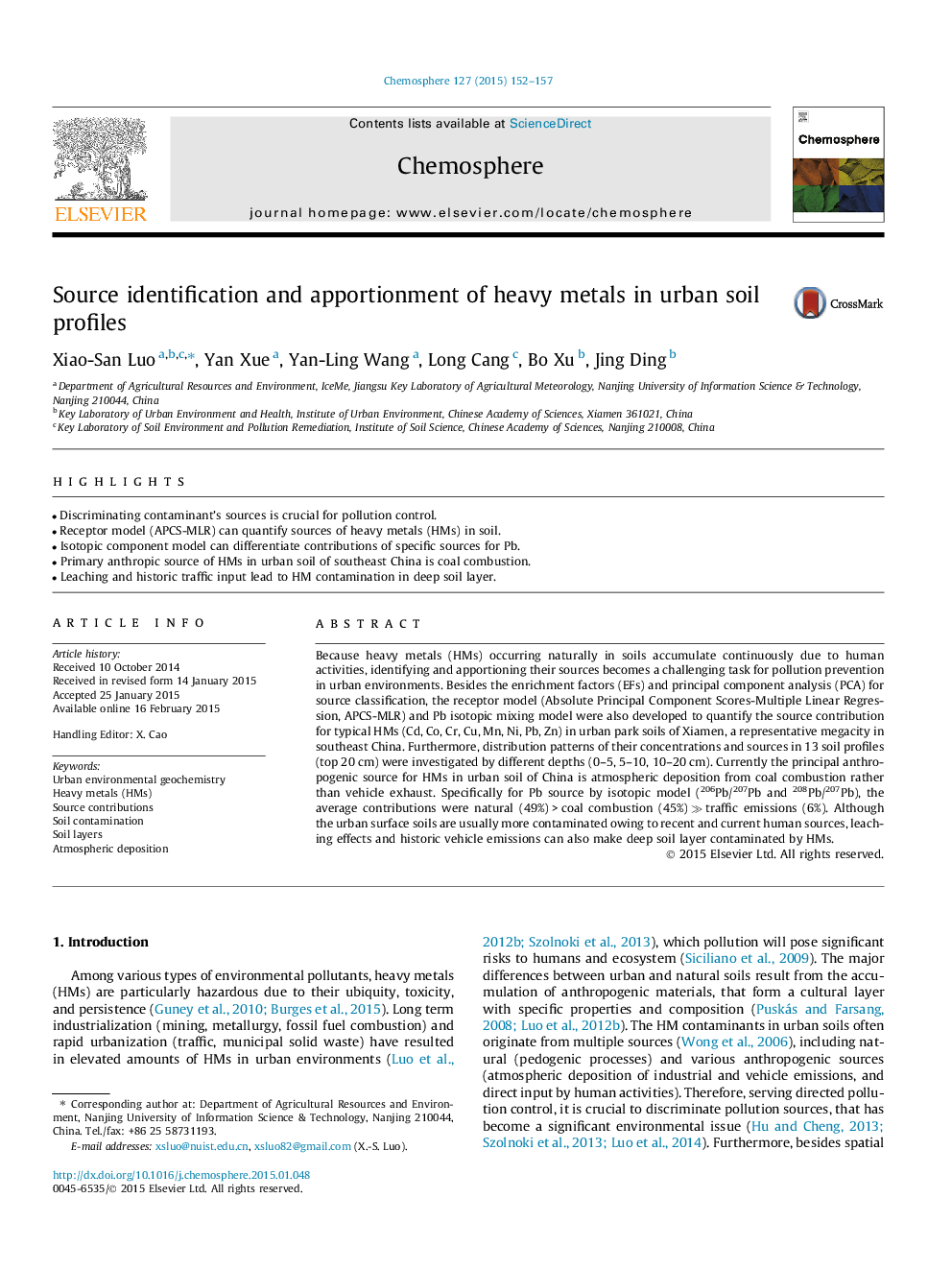| Article ID | Journal | Published Year | Pages | File Type |
|---|---|---|---|---|
| 4408532 | Chemosphere | 2015 | 6 Pages |
•Discriminating contaminant’s sources is crucial for pollution control.•Receptor model (APCS-MLR) can quantify sources of heavy metals (HMs) in soil.•Isotopic component model can differentiate contributions of specific sources for Pb.•Primary anthropic source of HMs in urban soil of southeast China is coal combustion.•Leaching and historic traffic input lead to HM contamination in deep soil layer.
Because heavy metals (HMs) occurring naturally in soils accumulate continuously due to human activities, identifying and apportioning their sources becomes a challenging task for pollution prevention in urban environments. Besides the enrichment factors (EFs) and principal component analysis (PCA) for source classification, the receptor model (Absolute Principal Component Scores-Multiple Linear Regression, APCS-MLR) and Pb isotopic mixing model were also developed to quantify the source contribution for typical HMs (Cd, Co, Cr, Cu, Mn, Ni, Pb, Zn) in urban park soils of Xiamen, a representative megacity in southeast China. Furthermore, distribution patterns of their concentrations and sources in 13 soil profiles (top 20 cm) were investigated by different depths (0–5, 5–10, 10–20 cm). Currently the principal anthropogenic source for HMs in urban soil of China is atmospheric deposition from coal combustion rather than vehicle exhaust. Specifically for Pb source by isotopic model (206Pb/207Pb and 208Pb/207Pb), the average contributions were natural (49%) > coal combustion (45%) ≫ traffic emissions (6%). Although the urban surface soils are usually more contaminated owing to recent and current human sources, leaching effects and historic vehicle emissions can also make deep soil layer contaminated by HMs.
